Russell Tovey: ‘Art has become a huge part of my life’
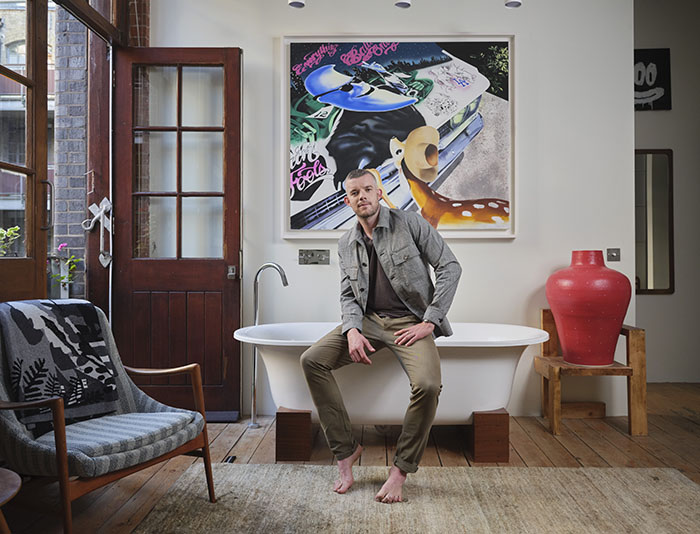
Roula Khalaf, Editor of the FT, selects her favourite stories in this weekly newsletter.
“Art has become a huge part of my life now, alongside my acting,” the TV, film and stage actor Russell Tovey tells me. As well as his acting career — which includes major roles in The History Boys, Being Human, Flesh and Blood, The Good Liar and others — Tovey is a passionate art collector. He is one of the pair behind Talk Art, a podcast that has garnered more than a million downloads. Last year he curated Margate Now, the 2019 edition of the seaside town’s festival.
He speaks to me via Skype from his light-filled loft conversion in London’s Shoreditch. The sun shines through the windows of his spare bedroom, making his ears glow. A baseball hat is jammed backwards on his head and he is wearing a plain grey T-shirt; he is relaxed and talkative but clearly distressed by the news of rioting across the US.
“I’ve been very diligent about the lockdown and now we are slowly re-emerging and then all this stuff happens, and we are in another state of emergency,” he says. He was in New York when the crisis started, playing Nick in Who’s Afraid of Virginia Woolf. They only had nine previews before it was closed after an usher tested positive for the virus. “I flew back the next day. Two days later they shut the [US] borders, so I got back just in time.”
The loft is where he keeps most of his 300-strong art collection, which he has been building up over some 20 years — “but properly collecting for about 10 years”, he clarifies. He has always been a collector, he tells me — as a child he was fascinated by rocks and minerals, and his mother regularly took him and his brother to London’s Natural History Museum. “I also loved cartoons and got into pop art — Lichtenstein obviously, Warhol, Keith Haring, and for a while I wanted to be an animator,” he explains.
There were two defining moments: “The YBA [Young British Artists] movement was happening and I remember seeing all of these works in the Saatchi gallery — Tracey Emin’s tent, Marc Quinn’s ‘Blood Head’ and Ron Mueck’s ‘Dead Dad’ — and I felt totally overwhelmed with excitement.”
Then he saw an Emin edition called “Dog Brains” in a friend’s flat. “I was transfixed! I was like, I need that!” He asked for a copy for his 21st birthday and his parents were bemused. “It was 350 quid or something — a small drawing of a woman’s body with a dog’s head.” But they gave it to him anyway.
Tovey subsequently became “really good pals” with Emin and he still collects her work. He started visiting auctions and galleries and after initially feeling ill at ease — “I definitely had the imposter syndrome, I felt I shouldn’t really be there” — he found his enthusiasm broke down barriers. As his career progressed, he says, “I was lucky that I was an actor . . . so there was recognition, and it gave me kudos in the art world.”
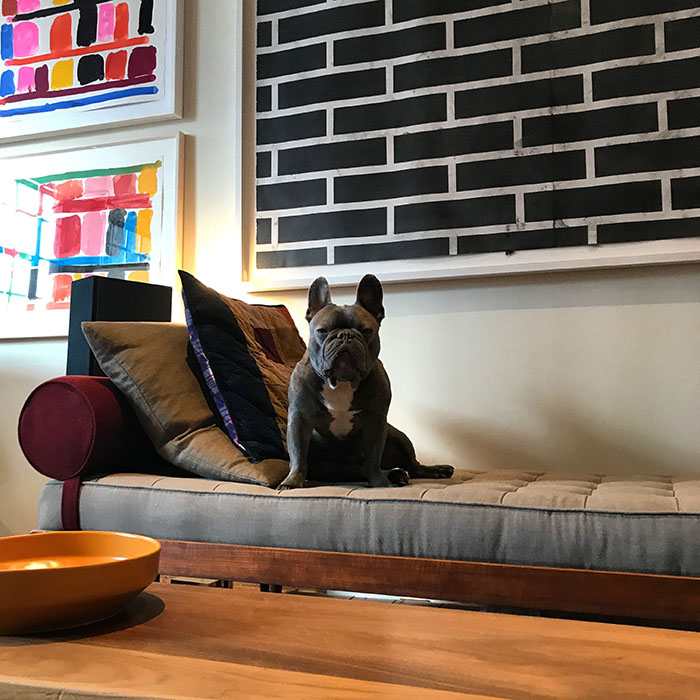
In the beginning, he says, “I was definitely swayed by other collections I saw in rich people’s houses. You look around and you’re thinking, ‘They’ve got that and that, maybe I should be buying that artist too’ . . . But now I feel very confident in my own taste.”
That taste focuses on emerging artists and works on paper. He says: “You can see the effect you’re having on a person’s career. You are encouraging them, and it’s so exciting when they get museum shows and are becoming part of the zeitgeist. I feel really proud when I was there at the beginning.” As for works on paper, “I love an artist who treats these as being as important as other artists treat canvas — I like the immediacy.”
Hanging in his home are pieces by Tony Lewis, a painting of bricks taking pride of place above the sofa; Cheyenne Julien, with a blue-hued nude; a vivid figurative work by Jamian Juliano-Villani and a bright abstraction by Stanley Whitney. Other artists in the collection are Carmen Herrera, Joyce Pensato, Alvaro Barrington, Nicolas Party, Amoako Boafo, Walter Price, Louis Fratino, Doron Langberg, Jon Key, Rose Wylie, Wolfgang Tillmans, Torey Thornton, Toyin Ojih Odutola, Lisa Brice, Lenz Geerk.
I ask if he has a budget for art: he doesn’t really answer but says, “Every job I get I think, ‘That’s good, I can take some of the money for art!’ From a young age I loved that galleries would do a payment plan. I don’t have limitless amounts — there’s no way on earth I could buy some works. What I really want right now is one by [the Japanese artist] On Kawara — a painting of my date of birth, 14 November 1981 — but I don’t think it exists . . . ”
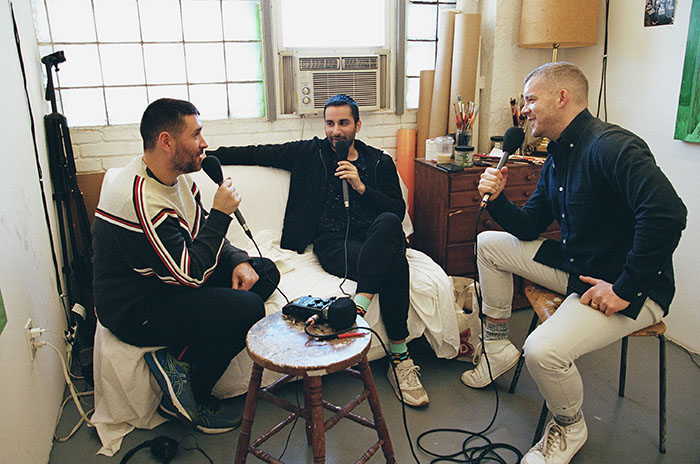
Three years ago, he started the Talk Art podcast with gallerist Robert Diament, a director with the Carl Freedman gallery in Margate. They initially met through Emin (Margate is her hometown). “We are best mates and geeky,” says Tovey of Diament.
The podcast is lively, accessible and enthusiastic, and the 80-odd episodes have featured everyone from the uber-curator Hans Ulrich Obrist and Tate director Maria Balshaw to artists Kaws (Brian Donnelly) and Lisa Yuskavage, actor Josh O’Connor, musician Elton John and art critic Jerry Saltz. Under lockdown, “Talk QuarARTine” special editions were coming out at the rate of two a week, and there are more than 20 now. “It’s very gossipy and fun,” he says. “It’s non-academic, and people find it refreshing to hear someone like me with my [working-class] accent and background talking about contemporary art and art history.
“We wanted to create an archive of this [pandemic] in culture. It is like a time capsule of this moment culturally, and it felt important to get that out.”
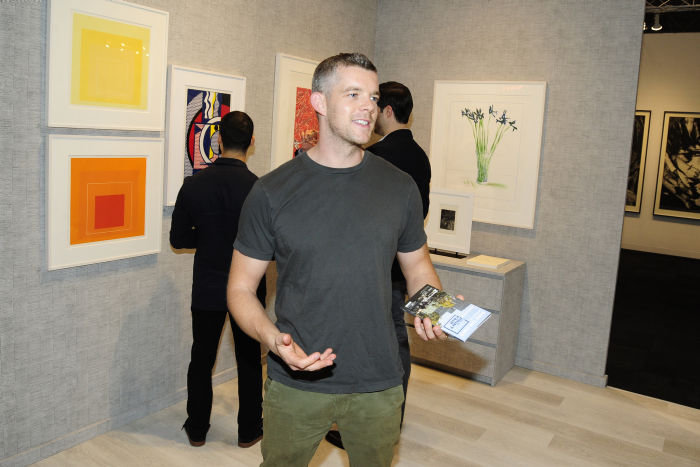
So what is the future of his collection? Tovey admits he is thinking along the lines of a museum. “One dream is to have a little Tovey Foundation where I can show the works I own and collect, the other is to support an emerging artist with a residency. And I would like to go more into curating, as in Margate.”
I ask how he can manage to do all this — act, curate, collect, write, produce the podcast. He laughs. “I enjoy it all! Sometimes work is more fun than fun.”
Follow @FTLifeArts on Twitter to find out about our latest stories first. Listen to our podcast, Culture Call, where FT editors and special guests discuss life and art in the time of coronavirus. Subscribe on Apple, Spotify, or wherever you listen.
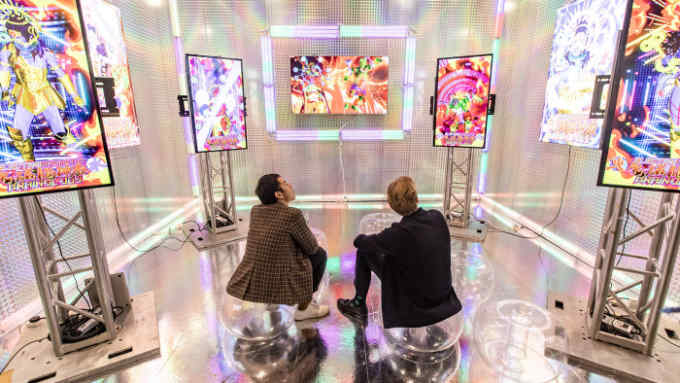
Comments